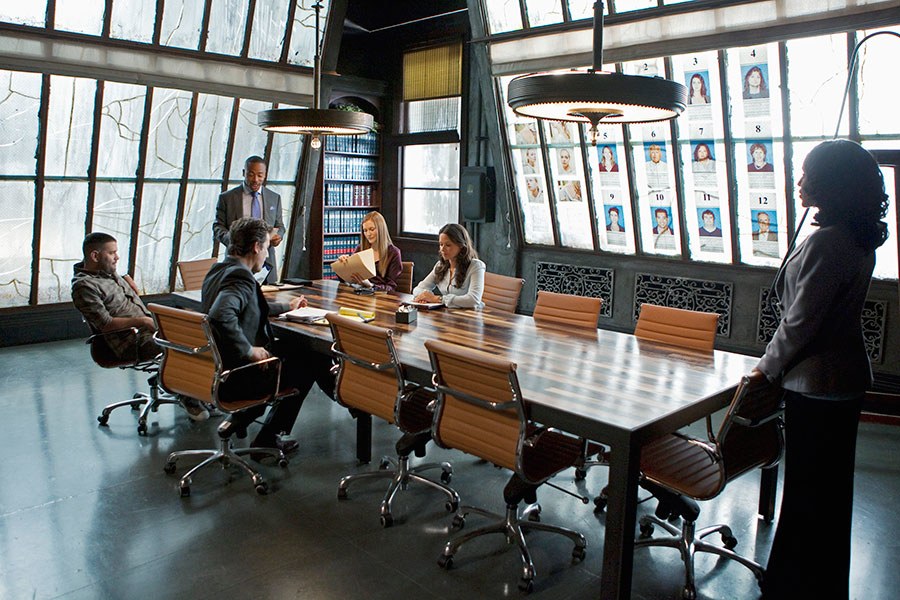“A war room serves as a landscape for the manifestation and development of ideas. In this marketplace of creativity, team members come together to brainstorm, solve complex problems and crank out big projects in impossibly short time constraints. Even the rooms themselves are filled with elements to spark creativity …”
If you run a startup with a small office, dedicated conference rooms don’t cut it. You can try to make your space feel bigger than it actually is, but when it comes to getting work done, you need to make every square foot count.
That means your conference room or dedicated meeting area has to double as a war room. Rather than solely using a room general purpose meetings, create a space that doubles as a creative brainstorming environment for specific projects.
Brainstorming in a war room can significantly improve creative thinking and productivity while leaving fewer things to memory. Here’s how you can create a war room to unlock your team’s genius.
1. Use whiteboards, and lots of them.
Your current meeting room probably has a whiteboard or two, but you’re going to need a lot more if you want it to operate as a war room.
One of the advantages of dedicated brainstorming rooms is that you can leave information up permanently. Dedicate one whiteboard to a specific part of a project, and keep the information visible even when you’re not specifically working on it. This way, you’ll have easy access to topics you discussed in previous meetings without having to dig through files (physically or digitally).
Of course, you’ll still need an erasable whiteboard for short-term meeting notes. If you’re short on space, try using a portable whiteboard for meetings, and dedicate a large wall-mounted whiteboard for long-term projects.
2. Maximize surface area.
The biggest benefit of brainstorming in a war room is the ability to layout visual information. While it’s a bit more cumbersome to move sticky notes and whiteboards around than to copy and paste in a digital file, physical data is far easier to skim and remember spatially.

Therefore, you don’t have to limit your surface area to whiteboards. Any surface that you can lay information on would work, including windows, walls, and desks. Try placing relevant materials like design printouts, charts, and sketches in different parts of the room. The more spread out your information is, the easier it’ll be to remember where everything is.
3. Make your office furniture flexible.
Ideally, your teammates and furniture will be as flexible as your notes. If you’re using all of your wall space for notes, you’re going to have to walk around to access everything. War rooms are not a static environment.
Wheeled chairs are a must, needless to say. On top of that, it helps to have wheeled (better yet, foldable) desks for easy rearrangement of the room.
Recommended: 11 Stunning Desk Chairs For Your Home Office
If it’s not possible to make the furniture flexible by design, make sure each item is light enough to move. Heavy pieces of furniture are only going to get in your way, even if they look nice. Save it for a room that has a more static layout.
Given the current state of communications technology, much of what made conference rooms necessary is all but gone. Group chats and video calls make remote work a snap, and casual meetings can be conducted digitally as easily as they could be in person.
If space is short, make the most of your conference room and double up on its functionality. With this war room layout, you’ll enjoy concrete benefits that can’t be replicated digitally.
This article has been edited and condensed.
Stefan Bhagwandin is a content writer for Share Your Office, a real estate tech startup that offers on-demand listings of offices, meeting rooms, and coworking spaces. He writes about startup culture, commercial real estate, coworking spaces, and office design. Connect with @shareyouroffice on Twitter.
© YFS Magazine. All Rights Reserved. Copying prohibited. All material is protected by U.S. and international copyright laws. Unauthorized reproduction or distribution of this material is prohibited. Sharing of this material under Attribution-NonCommercial-NoDerivatives 4.0 International terms, listed here, is permitted.













